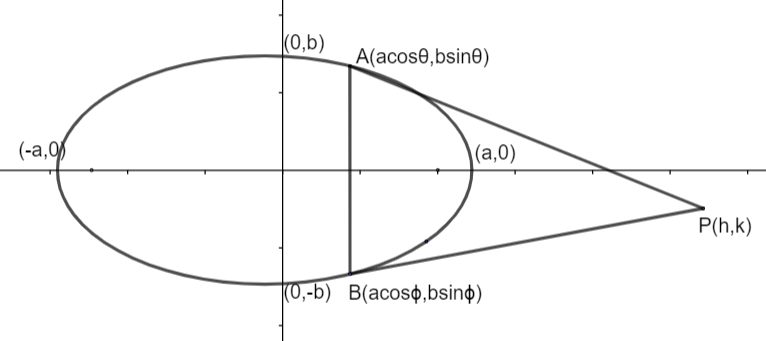Question
Question: Find the locus of intersection of tangents if the sum of the ordinates of the points of contact be e...
Find the locus of intersection of tangents if the sum of the ordinates of the points of contact be equal to b in ellipse a2x2+b2y2=1.
Explanation
Solution
Hint: Write down the standard equation of chord of contact. And suppose parametric coordinates for both points of contact of contact. Write down line passes through it (chord of contact). Compare both lines as they represent the same line.
Complete step-by-step answer:
We have given equation of ellipse as a2x2+b2y2=1−(1)
Let us suppose two points on ellipse A(acosθ,bsinθ) and B(acosφ,bsinφ) in parametric form.

We have given that sum of ordinates of points of contacts of tangents is b i.e.
